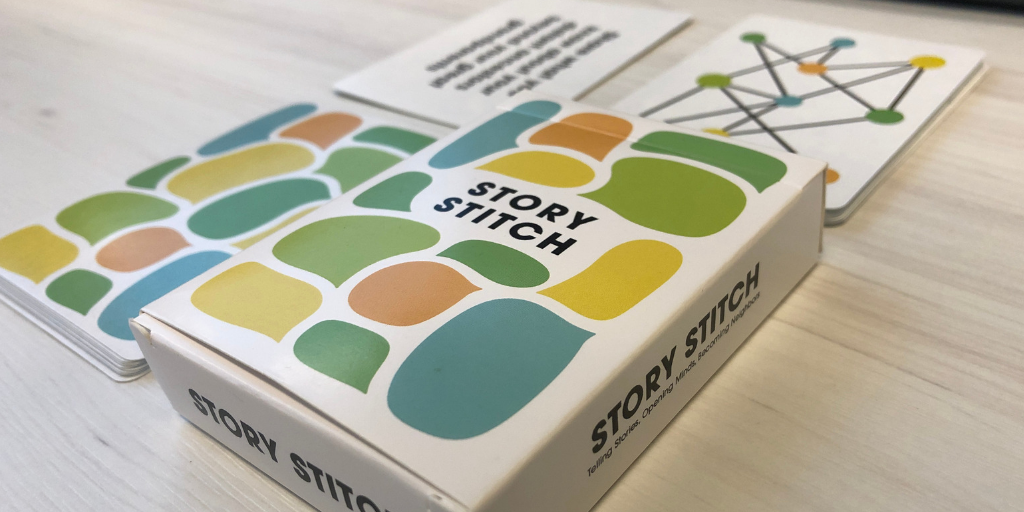
 Hello! I am Claire Stoscheck, a Senior Consultant at IG. For this month’s IG-ology, and in honor of our focus on inclusion, I want to tell you about Story Stitch. This is a guided group activity designed by Green Card Voices that connects and builds empathy between people of different cultural backgrounds. The activity revolves around storytelling, a powerful tool for building connections, which is key in our work and the work of many of our clients. It challenges people to be brave and vulnerable as they share stories about their lives.
Hello! I am Claire Stoscheck, a Senior Consultant at IG. For this month’s IG-ology, and in honor of our focus on inclusion, I want to tell you about Story Stitch. This is a guided group activity designed by Green Card Voices that connects and builds empathy between people of different cultural backgrounds. The activity revolves around storytelling, a powerful tool for building connections, which is key in our work and the work of many of our clients. It challenges people to be brave and vulnerable as they share stories about their lives.
Story Stitch was designed to help facilitate connections between immigrants and refugees and non-immigrants. It can be used for bridging other backgrounds as well, such as different age groups, genders, job classifications, religions, etc. Story Stitch can be useful in many settings; in evaluation, we often work with groups with diverse backgrounds, and it can be a valuable tool to build trust, create group cohesion, and develop interpersonal connections.
The premise of the activity is simple: split into groups of a maximum of eight; each member introduces themselves; then the group takes turns drawing story cards, answering the questions, and building on each other’s answers using stich cards. As the game goes on, we learn more about the unique backgrounds of the group and become more connected!

One thing that I have learned through my experience using Story Stitch is that it can cause feelings of discomfort. Getting out of our comfort zones and being vulnerable with our peers is an important piece of the activity! However, there are some important things to consider before you try Story Stitch with a group:
- Make sure to leave ample time for the activity so that every group member has a chance to share a story. I recommend at least 30-45 minutes. You may also want to provide time at the beginning for participants to review the questions, so they can prepare themselves.
- If someone is willing to go first and model vulnerability, they can set the stage for the rest of the group. If available, you could have someone at each table who has familiarity with the activity and can tend to its sensitive nature.
- Be considerate about who is participating. Some cards may be especially triggering to people who have experienced trauma, so you may want to consider removing or theming them. If you are working with groups of different privilege and power levels, ensure that the people who are marginalized or have less power are not being put in a risky situation.
- Of course, you never know what can be triggering or put people at risk, so it’s important before you begin to make sure everyone understands that they can skip any story cards, and each participant controls how they want to share their story.
It is important to have tools like Story Stitch to remind us that no matter the differences in our backgrounds we are all people who experience different joys and hardships. It can also help remind those of us who are not Native American that we have immigration backgrounds and stories. Want to try it out? You can buy it here!
